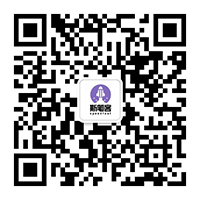
” CET235程序 写作、 辅导Java,Python编程语言Module Code: CET235Module Title: Internet Of ThingsAssessment Number: 1 of 2Assessment Title: Single IoT Device PrototypeThe following learning outcomes will be assessed:Knowledge1. An understanding of the Tools, techniques and frameworksavailable for the development of applications for IoT devices.Skills3. Use of appropriate programming language concepts for thedevelopment of applications for IoT devices.4. Application of industry standard tools and practices to thedeployment and testing of IoT device applications, including theacquisition, interpretation and visualisation of data.Deadline for submission of deliverables:Submission Date and Time 5PM, FRIDAY 14th MAY 2021Submission Location Submission via Canvas Assignment PageProfessional Practice Week 1 contributes 30% to your final module mark andassesses learning outcomes 1, 3 and 4.This assessment is taking place as a Professional Practice Half Week.Important InformationYou are required to submit your work within the bounds of the University Infringement ofAssessment Regulations (see the Programme Handbook). Plagiarism, paraphrasing anddownloading large amounts of information from external sources, will not be tolerated andwill be dealt with severely. Although you should make full use of any source material, whichwould normally be an occasional sentence and/or paragraph (referenced) followed by yourown critical analysis/evaluation. You will receive no marks for work that is not your own.Your work may be Subject to checks for originality which can include use of an electronicplagiarism detection service. Where you are asked to submit an individual piece of work, thework must be entirely your own. The safety of your assessments is your responsibility. Youmust not permit another student access to your work. Where referencing is required, unlessotherwise stated, the Harvard referencing system must be used (see the ProgrammeHandbook).Page 2 of 5ScenarioRationaleYou are currently working for a software development company who provide IoT systemsolutions to small and medium sized technology companies in the food, hygiene and biomedicalsectors.Currently you are working on a contract that requires a proof of concept prototype to monitorenvironmental conditions during access to a controlled bio-medical manufacturing area. Thiscontrolled area is normally sealed and kept under steady state conditions. However, it issometimes required to access this area for very short time periods to perform upkeep andmaintenance tasks whilst the manufacturing process continues.The contract calls for you to provide a prototype software simulated IoT solution aimed atlogging environmental conditions during these access periods. In addition, you are toprovide a console based desktop application that will allow basic visualisation and analysisof the logged data from the simulated IoT system.Tasks1. Software Simulated IoT Prototype System You need to provide a suitablesoftware simulated IoT prototype rig (using software simulated MCUs, sensors, inputdevices, output devices etc) that will allow the temperature and relative humidity tobe recorded and then logged during an access period to the controlled area. In thisprototype system, you will be simulating the actual access period to the controlledarea (obviously, as you do not have the manufacturing facility available to you).You must provide the following functionality, with updates in your program happeningapproximately once every second:-a. A recorded log of the current temperature (in Celsius) and relative humidity (in %),this must only be Recorded and logged during an access period.b. A date and time timestamp of each set of readings from a. above as they arerecorded in the log.c. If the currently active access period has lasted around 10 seconds or less thenshow a green coloured indicator light.d. If the currently active access period has exceeded 10 seconds then show a redcoloured indicator light.e. If there is no currently active access period then no coloured lights should beshowing.f. A visual output of the current date, time, temperature and relative humidityreadings whether there is a currently active access period or not.Page 3 of 5g. A visual output of the approximate number of seconds a currently active accessperiod has lasted.When providing the above functionality make sure you only record and log readingsduring active access period, not outside of these. In order to properly prototype yoursystem you will have to provide a way to simulate these access periods. You will alsoneed to provide a way to gracefully stop and shut down the run of your prototype.You can assume the date and time for all your readings begins at 12th May 2021(which is a Wednesday), 9:30am, 0 seconds and 0 microseconds.As this is a simulation, you can record readings that are somewhat manipulated fromthe environmental sensor so you can see and test the operation of the prototype.Such simulated data can then be observed when utilising it in the desktop applicationdetailed below.2. Desktop Application Using the recorded and logged data taken from a run of theprototype IoT system, you need to provide a console based desktop application thatprovides the following output for each access period logged in the data:-a. Start date and time of the access period.b. End date and time of the access period.c. Approximate number of seconds the access period lasted.d. A list of all the recorded readings (including the timestamp for each) during theaccess periodAs stated, this output is required to be purely textual, displayed in a console terminaland does not need to be output in a graphical format. The individual elements of theoutput can be in any Order but it must be obvious for which access period each set ofdata is associated.Note: You can adapt tutorial example code and sample solution code to helpyou in solving both of these tasks detailed above.Deliverables1. Python 3 script(s) that provide the functionality detailed in Task 1 (SoftwareSimulated IoT Prototype System) above. This Python 3 script(s) should beproperly structured and commented to ensure good quality and describe howeach element of the script operates in providing the solution.2. A detailed guide (word processed and provided as a Microsoft Word document)as to how the required simulated IoT rig is to be prototyped, how the Python 3scripts are to be run and how to retrieve the logged readings from the simulatedmonitoring device after a run of your prototype program has finished.The emphasis here is on detailed. Assume that the user of this guide does havethe same CET235 simulated prototype rig software available you had availableduring the teaching sessions on the CET235 module. Use diagrams, screen shotsPage 4 of 5etc. to support your Guide so that it is obvious how to operate your softwaresimulated prototype rig solution, how to run your Python 3 script(s) and how toretrieve your logged readings.3. Python 3 script that provides the functionality detailed in Task 2 above. This scriptshould be properly structured and commented to ensure good quality anddescribe how each element of the script operates in providing the solution.4. A detailed guide (word processed and provided as a Microsoft Word document)as to how to run your desktop application, in particular describing how to get thelogged readings from the software simulated IoT system into the desktopapplication for visualisation and analysis. In addition, provide a set of screen shotsand descriptions of these screen shots explaining what is being output in yourapplication so that the user can understand what they are seeing.Submit all these scripts and documents as a single zipped archive file to the CanvasAssignment Page for this assessment by the deadline 5PM, FRIDAY 14th MAY 2021.请加QQ:99515681 或邮箱:99515681@qq.com WX:codehelp
“
添加老师微信回复‘’官网 辅导‘’获取专业老师帮助,或点击联系老师1对1在线指导。






